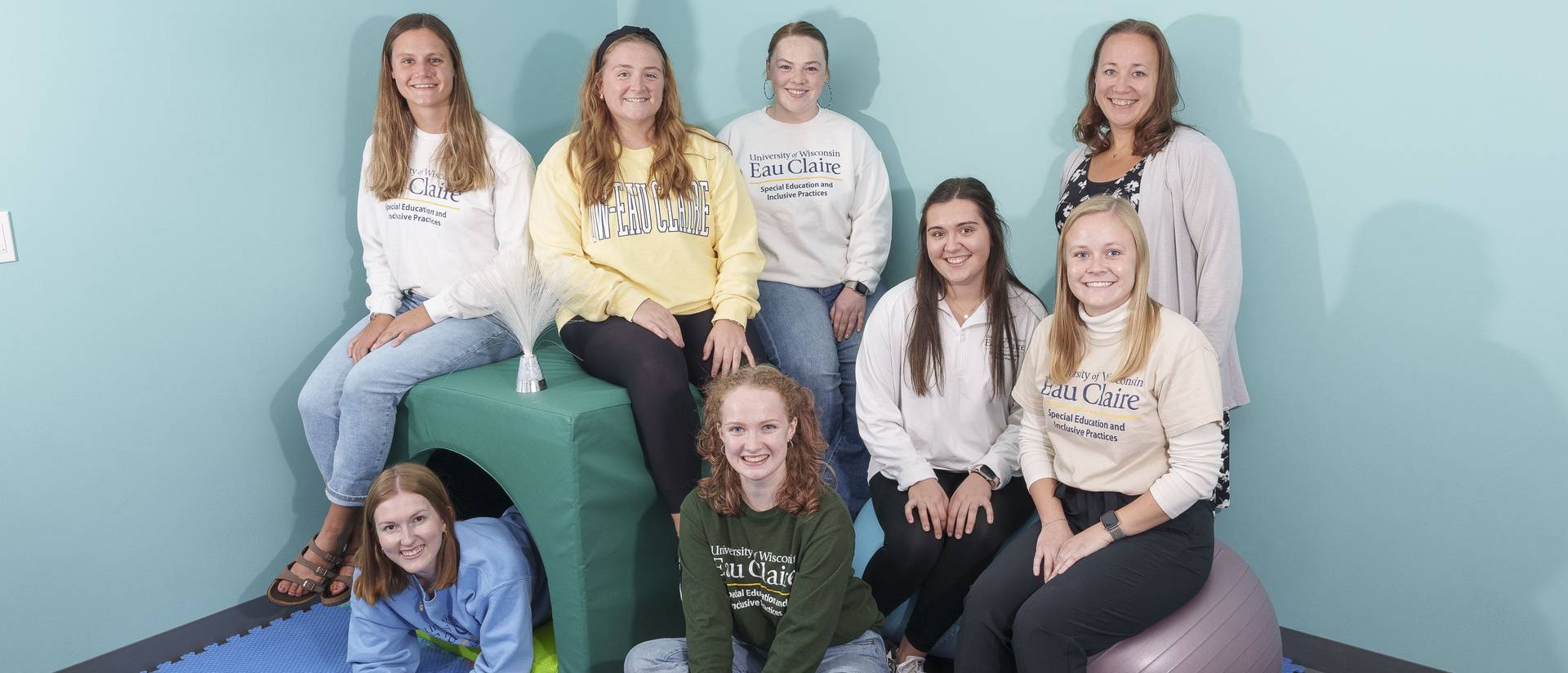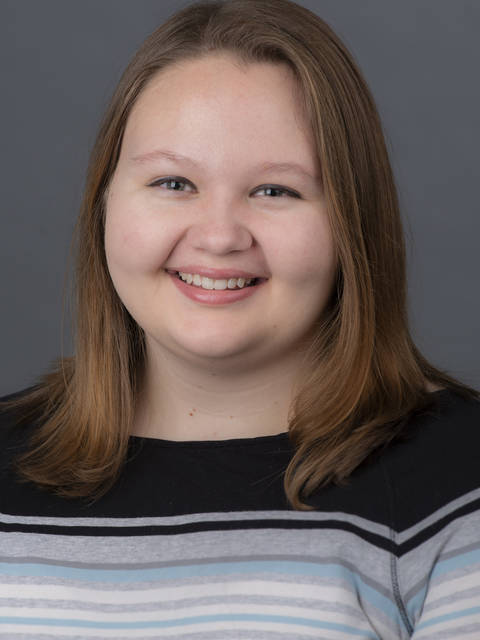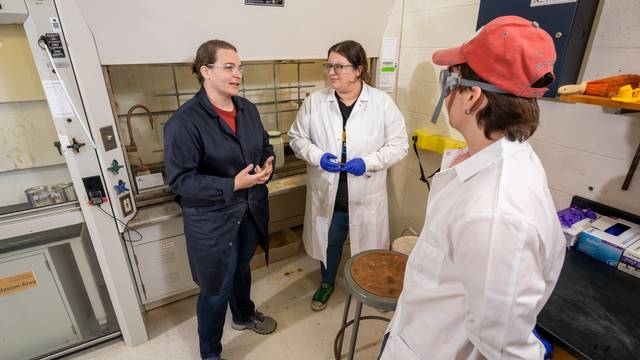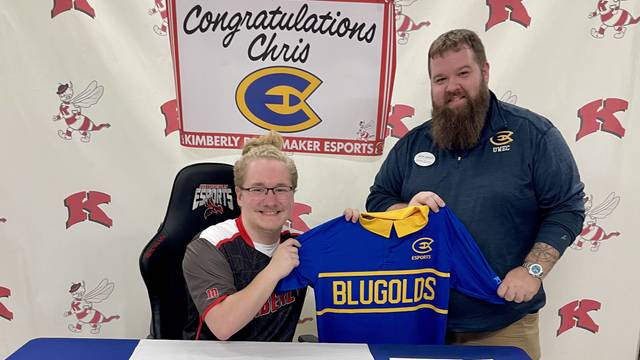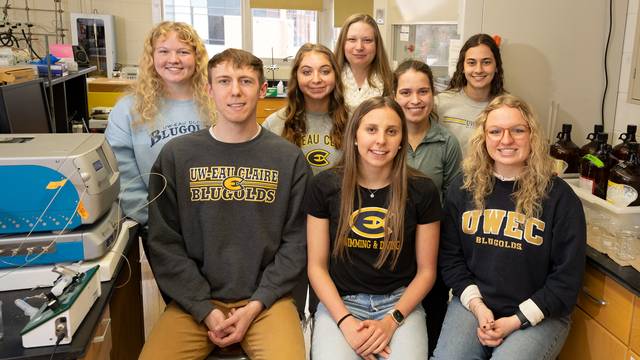Photo caption: Many of the students never imagined themselves conducting research in the college setting, but they went on to do just that by presenting their findings at the National Conference on Undergraduate Research, hosted by UW-Eau Claire last April.
Research at the University of Wisconsin-Eau Claire goes beyond the lab. From breweries and dog obedience classes to Europe and South Africa, Blugolds have conducted unique undergraduate research in a wide variety of settings. Recently, nine students and their professor conducted impactful research right here in Eau Claire.
After being approached by the Children’s Museum of Eau Claire to consult on their new building, Dr. Kirstin Rossi, associate professor of special education and inclusive practices, reached out to her students to help design and implement a sensory room in the museum’s new space.
None of the special education students thought they would be so heavily involved in research during their college careers or that they would have so much fun doing it.
“It’s kind of intimidating from an outside standpoint, but what’s so cool about the university is that there’s so many opportunities to do research that you’re passionate about. Being able to work with the community, I think will be one of the defining moments of my college career,” says Lainey Walworth, a senior special education major from Bloomington, Minnesota.
Sensory dysregulation is defined as a mind or body state that occurs when the body is out of balance due to experiences in the environment. Distressing stimuli might include sound, smells, light, movement and even texture. The dysregulation affects children's and adults’ moods, potentially causing anxiety or meltdowns.
In an effort to prevent sensory dysregulation, there are many resources available in the museum for children and their families to use, including a visual schedule, first-then board and calming activities. The research team designed the room so that children could move through the different areas with the goal of returning to the museum. Also, as part of their research, the students found specific resources and provided them to the museum, such as a sensory backpack.
“We're trying to help sensory regulation happen in a variety of ways and decrease the stigma around that dysregulation, because the reality is every single person does something different to regulate themselves,” Rossi says.
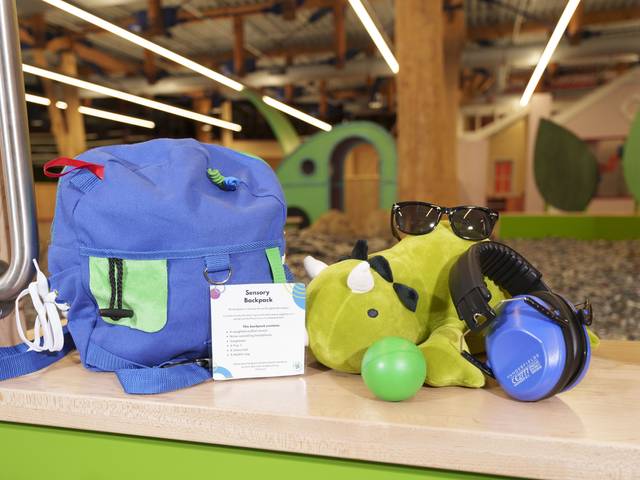
The research teams not only focused on assisting with dysregulation once it occurs, but also on actively preventing it. Sensory backpacks are given to visitors to bring with them throughout the exhibits, giving them access to fidget tools, weighted stuffed animals, sunglasses and noise-canceling headphones.
Partnering with the museum and Volume One, the students also created a sensory map of the museum. This gives visitors the ability to determine which areas of the museum might trigger dysregulation, such as areas of high or low light, noisy exhibits, etc. This is the universal map used in the museum so that everyone has access to the information without having to ask for it, encouraging destigmatization and even opening the eyes of parents who might not realize what might be causing dysregulation for their child.
Grace Groh, a senior special education major from Bay City, reflected on the ripple effect this kind of research will have on her peers and the communities they’ll serve in the future.
“Not only is this a great experience, but we’re all people who are going to go out into schools, day cares, Head Start, etc., and we’re going to have the capability to sit in on meetings and do this kind of independent research. We’re going to have the skills we need to go out and do things like this for more kids.”
If you’re interested in visiting the Children’s Museum of Eau Claire, you can learn more here. Visit the special education program page to learn more about the major and apply.
The research team, from left to right in the top image are:
Back row:
- Abby Kroeger, a senior special education major from Rock Springs.
- Clara Dobratz, a senior special education major from Hutchinson, Minnesota.
- Grace Groh, a senior special education major from Bay City.
- Dr. Kirstin Rossi, an associate professor of special education and inclusive practices.
Front row:
- Lainey Walworth, a senior special education major from Bloomington, Minnesota.
- Rhea Schaberg, a senior special education major from Shoreview, Minnesota.
- Hannah King, a senior special education major from Augusta.
- Taylor Bangert, a senior special education major from Centerville, Minnesota.
Not pictured:
- Lexi King, a senior special education major from Green Bay.
